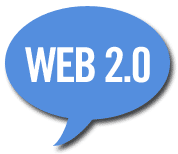Enterprise 2.0 Theoretical Review
According to Professor McAfee at Harvard (2006) there is a new wave of business communication tools including blogs, wikis and group messaging. There are new digital platforms for generating, sharing and refining information that are already popular on the Internet, where they are collectively labelled Web 2.0 technologies. The term “Enterprise 2.0” focus only on those platforms that companies can buy or build in order to make visible the practices and outputs of their knowledge workers. Enterprise 2.0 is all about Web 2.0 technologies and practices within organisations and businesses. Andrew McAfee (2006) provides a clear, clean explanation of Enterprise 2.0, and has introduced his "SLATES" mnemonic to help guide those creating or acquiring Enterprise 2.0 software. SLATES describes the combined use of effective enterprise search and discovery, using links to connect information together into a meaningful information ecosystem using the model of the Web, providing low-barrier social tools for public authorship of enterprise content, tags to let users create emergent organizational structure, extensions to spontaneously provide intelligent content suggestions similar to Amazon's recommendation system, and signals to let users know when enterprise information they care about has been published or updated, such as when a corporate RSS feed of interest changes (McAfee 2006). As in previous innovation cycles, whenever multiple point capabilities converge – such as wireless, pervasive broadband, and online collaboration – many new applications become possible. In these cases, consumers tend to adopt the new services and products before the enterprise, but in the end the enterprise market is usually far larger and more profitable. In McKinsey’s and Sand Hill Group’s Software Industry Report 2006 state that the hype around “Web 2.0” for consumers – with its rapid innovation in content tools (e.g., blogs, wikis, user editing and tagging) heralds a much larger opportunity to put these innovations to work in the enterprise. Many innovations, collectively termed Web 2.0, will fully reach the enterprise – as in previous cycles, innovation developed for individual users will translate into substantial enterprise opportunities (Berryman, Jones et al. 2006).
Berryman, K., J. Jones, et al. (2006). Software 2006 Industry Report, McKinsey&Company Inc.
San Hill Group.
McAfee, A. (2006). "Enterprise 2.0: The Dawn of Emergent Collaboration." MIT Sloan Management Review 47(3): 21-28.




No comments:
Post a Comment